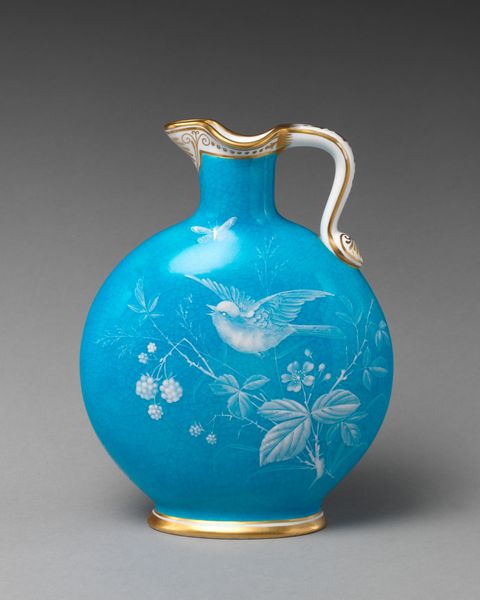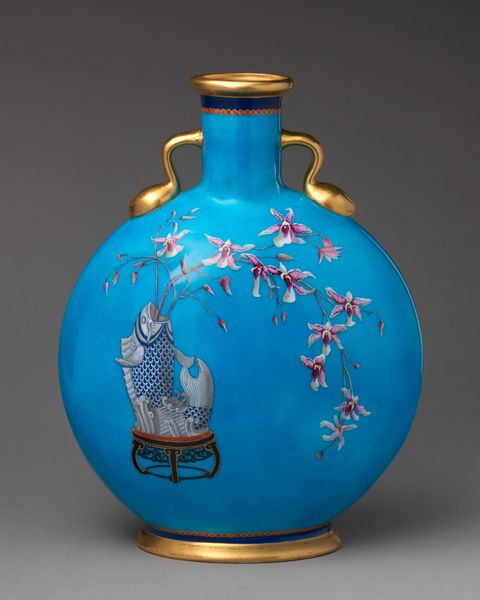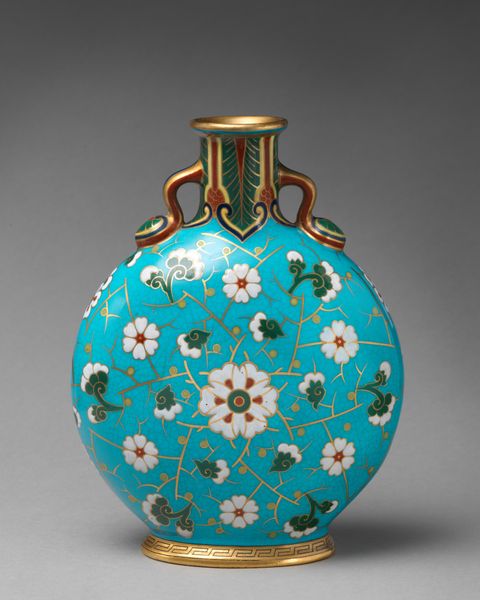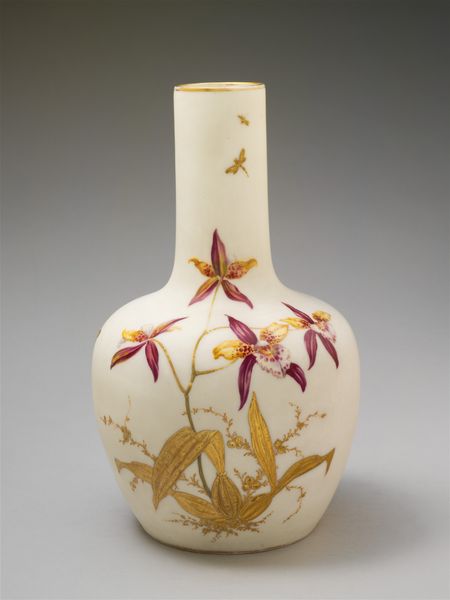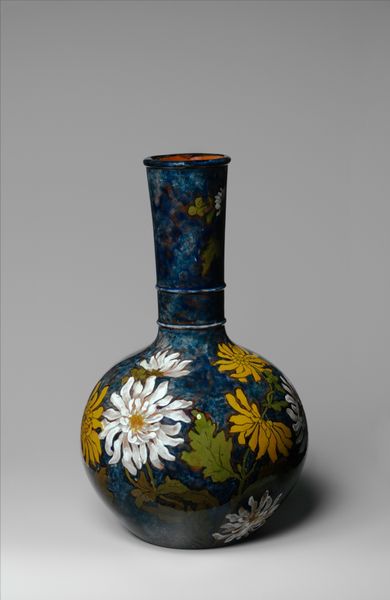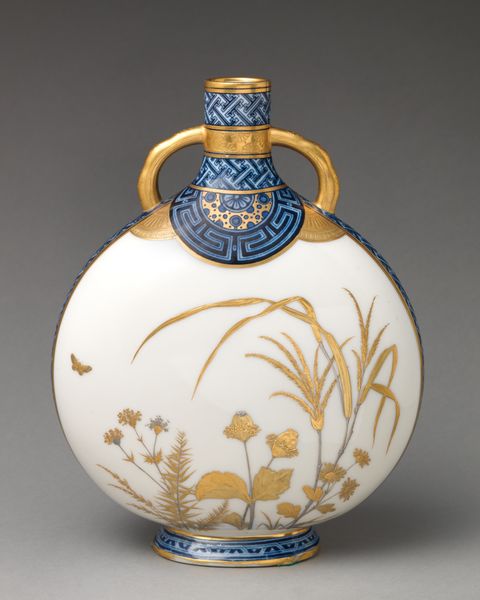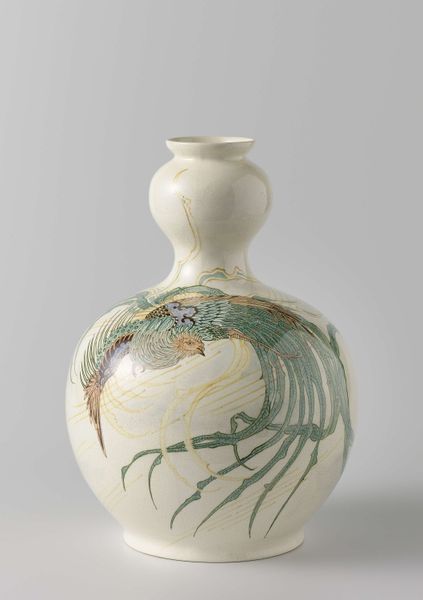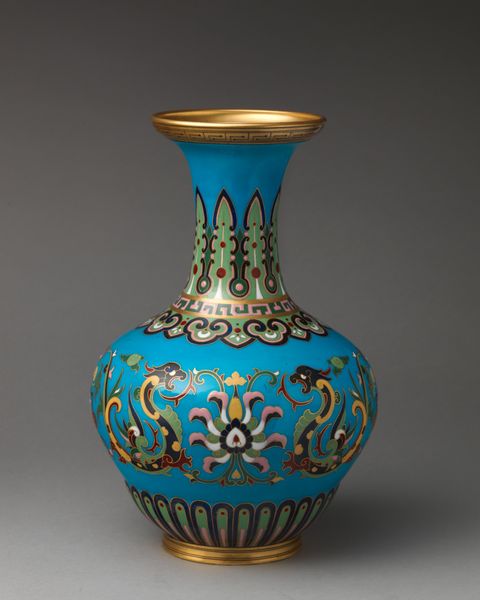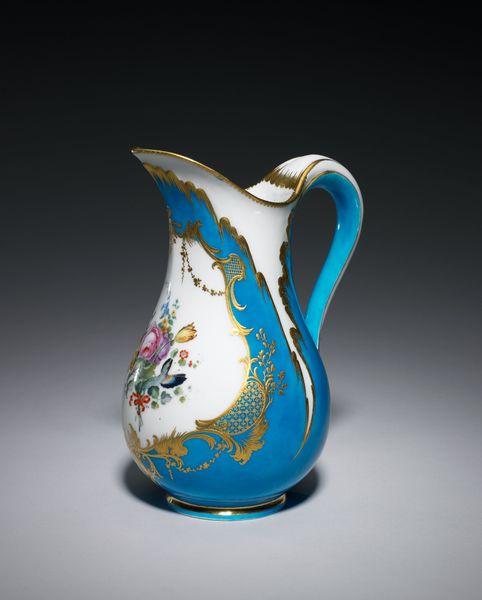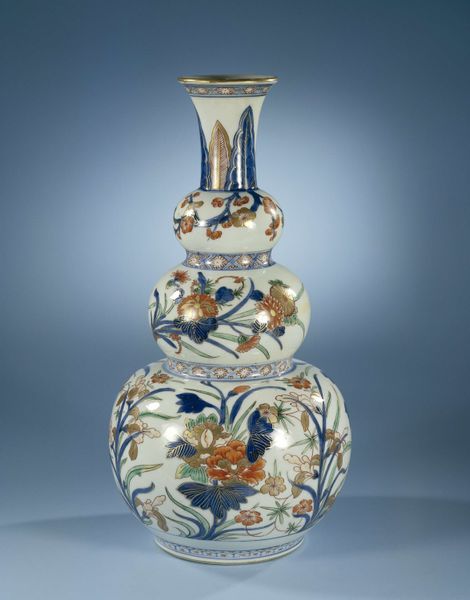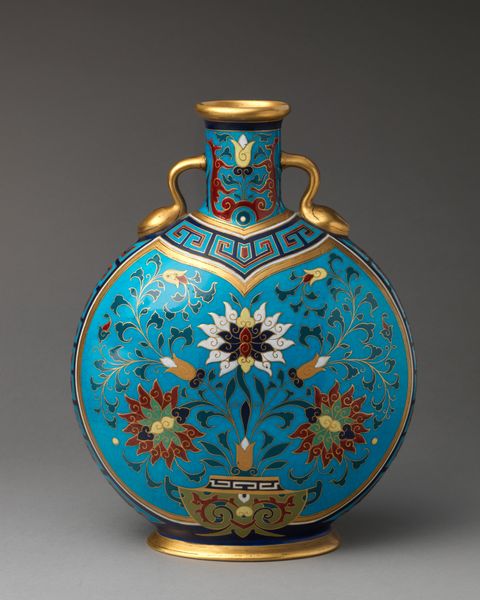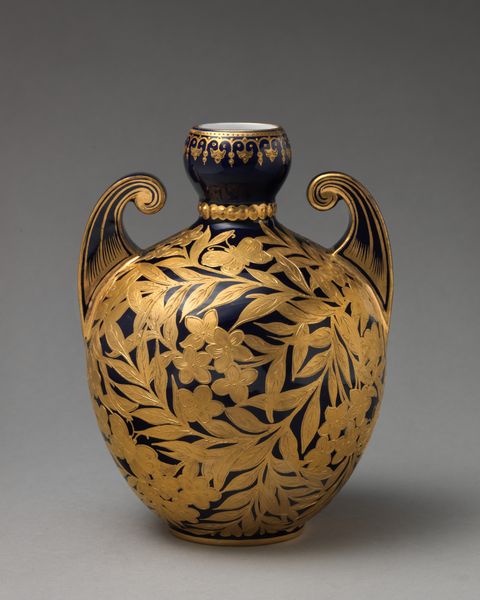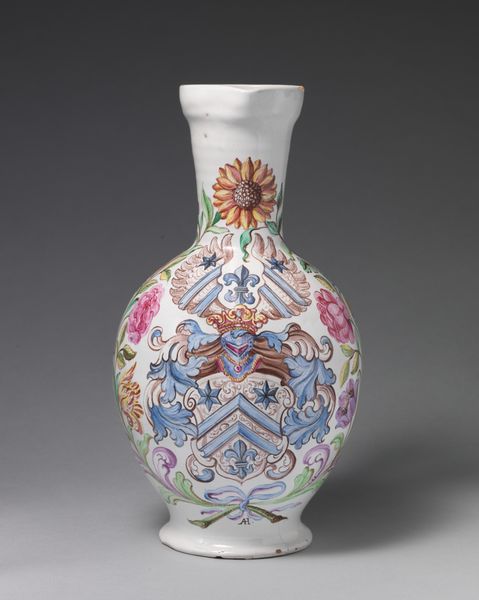
Dimensions: confirmed: 12 3/8 × 9 1/2 × 5 1/16 in. (31.4 × 24.1 × 12.9 cm)
Copyright: Public Domain
Curator: Here we have a "Moon flask with orchids," made sometime between 1867 and 1877 by Minton(s). It's currently held at the Metropolitan Museum of Art. Editor: The brilliant turquoise grabs you right away. It's almost like looking at a perfectly formed beach pebble, painted with delicate orchids. The gold trim gives it such a luxurious feel. Curator: Exactly. The moon flask shape itself had significant cultural currency, drawn from Chinese forms that were avidly collected and emulated in Europe during this period, indicating an increasing global trade and a cross-cultural appreciation influencing European decorative arts. Editor: And that's Minton seizing upon that desire. This porcelain flask probably demanded considerable skill from the pottery workers—handling the clay, applying that even, vivid glaze, painting the orchids… you can almost imagine the factory setting, the division of labor involved in its creation. Curator: And its consumption too was quite deliberate. This wasn't everyday ware; objects like these were part of carefully curated displays, meant to convey a certain level of taste, wealth, and cosmopolitanism during a period when industrialization was rapidly changing society. It speaks to Victorian era aspirations. Editor: Absolutely. The orchids, themselves, became status symbols. Remember the orchid craze of the 19th century? Importing them was expensive, and even just owning depictions of them in one’s home advertised a certain affluence. Plus, that bright colour, how did Minton achieve such intensity with the glazes available then? The firing process alone must have been carefully monitored. Curator: No doubt. What Minton achieved here shows an industrializing society and the rising middle class acquiring art with global flair. Editor: Right, from clay to kiln to collector's cabinet. Each stage layered with human input. Fascinating to think of this flask passing through all those hands. Curator: Precisely. It gives you a sense of the period, what people valued, what they aspired to be, and how objects helped perform those identities. Editor: A beautiful piece that tells multiple stories layered in materiality, manufacture and presentation.
Comments
No comments
Be the first to comment and join the conversation on the ultimate creative platform.
